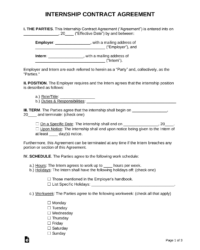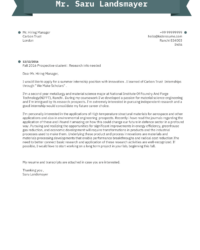Utilizing such a framework offers several advantages. It helps create a professional and polished first impression, demonstrating attention to detail and organizational skills. It also ensures consistency and completeness, reducing the risk of omitting vital details. Furthermore, a well-structured format simplifies the review process for hiring managers, increasing the likelihood of an application receiving thorough consideration.
This discussion will explore the key components of a strong application package, including crafting a compelling resume and cover letter, highlighting technical proficiencies, and showcasing relevant projects or experiences. Strategies for effectively using these frameworks to secure a competitive internship opportunity will also be addressed.
Key Components of an Effective Application Structure
A well-organized application structure is essential for conveying qualifications effectively to potential employers. Several key components contribute to a comprehensive and compelling presentation.
1. Contact Information: Accurate and up-to-date contact information, including full name, phone number, email address, and professional online profiles (e.g., LinkedIn), ensures prompt communication.
2. Summary/Objective Statement: A concise and focused statement summarizing career goals and highlighting key skills relevant to the targeted internship provides a compelling introduction.
3. Education: A detailed overview of academic qualifications, including degrees earned, major, university, GPA (if desired), relevant coursework, and expected graduation date, demonstrates academic preparedness.
4. Skills: A comprehensive list of technical skills (e.g., software proficiency, programming languages, laboratory techniques) and soft skills (e.g., teamwork, communication, problem-solving) showcases relevant capabilities.
5. Experience: A chronological listing of prior work experience, including company name, job title, dates of employment, and a concise description of responsibilities and accomplishments, demonstrates practical application of skills.
6. Projects: Highlighting relevant academic or personal projects, including project titles, brief descriptions, and key contributions, provides tangible evidence of technical abilities and initiative.
7. Awards and Recognition: Listing academic achievements, scholarships, or other recognitions further strengthens the application and showcases outstanding performance.
8. References: Providing contact information for professional references who can attest to skills and qualifications adds credibility to the application. (Note: Indicate “Available Upon Request” if preferred.)
A comprehensive application package utilizing these components allows candidates to present their qualifications effectively and increases the likelihood of securing a desired internship opportunity. Careful attention to each element contributes to a strong and compelling presentation.
How to Create an Engineering Internship Application Template
Creating a standardized application template streamlines the process of applying for engineering internships, ensuring consistency and professionalism. The following steps outline a structured approach to developing an effective template.
1. Choose a Format: Select a format suitable for electronic submission (e.g., Word document, Google Docs) that allows for easy customization and maintains formatting across different platforms.
2. Structure Contact Information: Designate a clear section for contact details, including full name, phone number, email address, and links to professional online profiles (e.g., LinkedIn, portfolio website).
3. Develop a Summary/Objective Section: Create a space for a concise summary or objective statement, allowing applicants to tailor this section to each specific internship opportunity. This section should highlight key skills and career aspirations.
4. Outline Education Background: Establish a section for educational details, including degrees earned or in progress, major, university, GPA (optional), relevant coursework, and expected graduation date.
5. Categorize Skills: Develop distinct sections for technical skills (e.g., software proficiency, programming languages, tools) and soft skills (e.g., communication, teamwork, problem-solving). This allows applicants to showcase a comprehensive skillset.
6. Structure Experience Section: Create a structured format for listing previous work experiences, including company name, job title, dates of employment, and a concise description of responsibilities and achievements. Encourage quantifiable accomplishments whenever possible.
7. Incorporate Project Showcase: Include a dedicated section for highlighting relevant projects, including project titles, brief descriptions, key contributions, and links to online repositories or demonstrations (if applicable).
8. Add Sections for Awards and References: Provide designated areas for listing awards, honors, and recognitions, as well as contact information for professional references or a statement indicating “Available Upon Request.”
A well-defined template incorporating these elements ensures a consistent and professional approach to internship applications, enabling individuals to effectively present their qualifications and experience to prospective employers. This structured approach enhances clarity and facilitates the review process for hiring managers.
A well-crafted, standardized structure for internship applications provides a crucial tool for aspiring engineers. It facilitates a clear, concise, and comprehensive presentation of qualifications, skills, and experience to potential employers. Key components such as contact information, a compelling summary, detailed educational background, a robust skills section, relevant experience and project showcases, and credible references contribute to a strong application package. A structured approach ensures consistency, professionalism, and ease of review for recruiters, maximizing the potential for securing a competitive internship.
Strategic utilization of such a structure significantly enhances the application process, enabling candidates to effectively articulate their value and potential. This proactive approach to career development positions aspiring engineers for success in a competitive job market, ultimately contributing to a robust and innovative future for the engineering profession.


